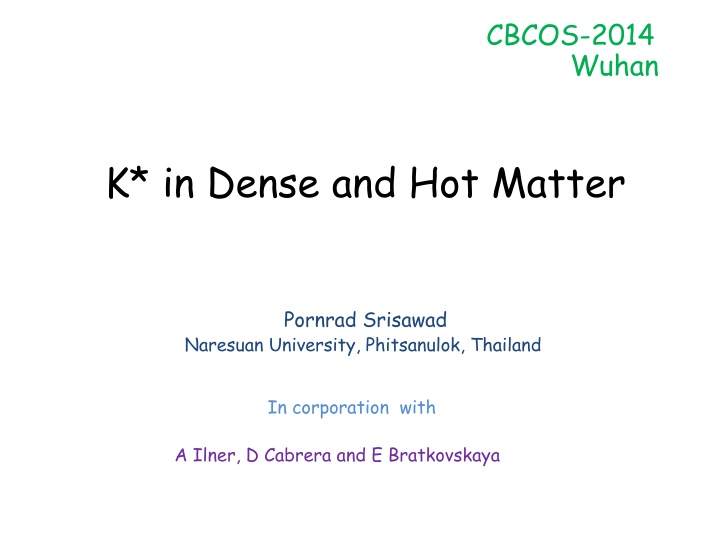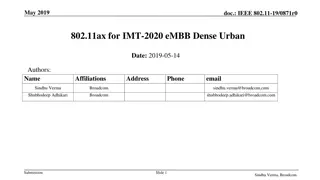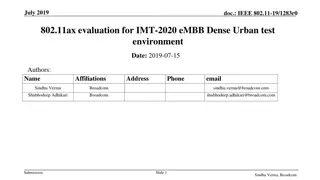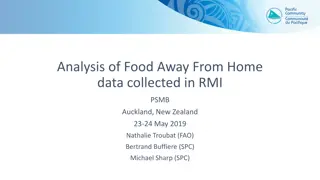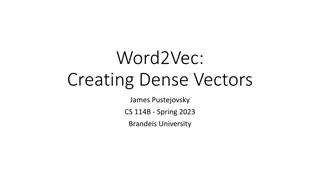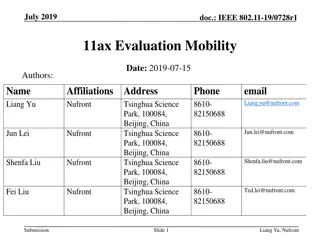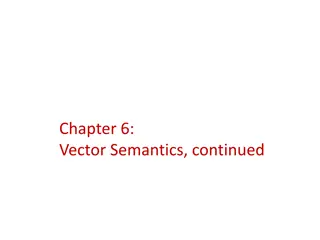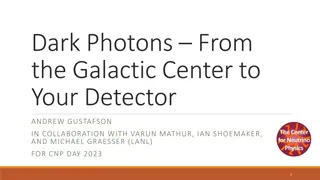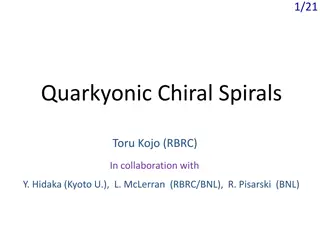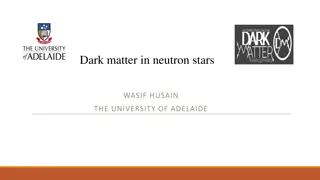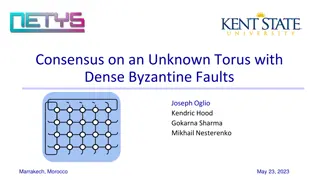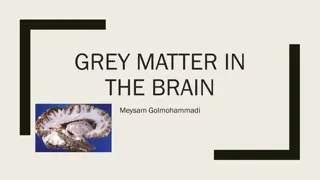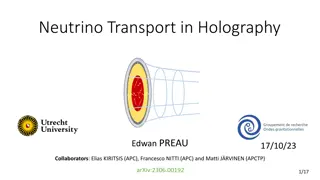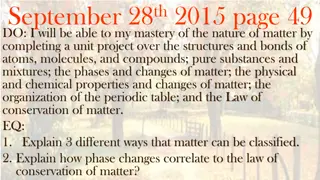K* in Dense and Hot Matter
Investigate the properties of kaons in various types of matter, such as dense nuclear matter and hot hadronic matter. Explore decay modes, probes for dense matter, and changes in kaon properties in dense matter. Analyze in-medium energy and kaon potentials. Study the influence of in-medium K+ potential on kaon yields in reactions. Compare K+ excitation functions and rapidity distributions from experimental data.
Download Presentation

Please find below an Image/Link to download the presentation.
The content on the website is provided AS IS for your information and personal use only. It may not be sold, licensed, or shared on other websites without obtaining consent from the author.If you encounter any issues during the download, it is possible that the publisher has removed the file from their server.
You are allowed to download the files provided on this website for personal or commercial use, subject to the condition that they are used lawfully. All files are the property of their respective owners.
The content on the website is provided AS IS for your information and personal use only. It may not be sold, licensed, or shared on other websites without obtaining consent from the author.
E N D
Presentation Transcript
CBCOS-2014 Wuhan K* in Dense and Hot Matter Pornrad Srisawad Naresuan University, Phitsanulok, Thailand In corporation with A Ilner, D Cabrera and E Bratkovskaya
Contents Introduction Medium effects of K* in dense nuclear matter Medium effects of K* in hot hadronic matter Results Conclusions
The properties of kaon close to threshold energy have investigate in HIC at SIS
Decay mode K*(892) K * K ( ) loop self energy diagram. ( ) K K * * / K K
Good probes for dense matter Kaons: ( ) + + N K = : 1.58 K us NN E GeV thr + N K ( ) + = : 2.5 K us NN NNK K E GeV thr K+ use for probe of EOS at high densities. 2/15/2025 5
Kaons change their properties in dense matter ( ) 2 in-medium energy + = *2 K 0 iV m K KN = + * K 2 K m m V V s 2 f = In-medium energy *2 *2 K 0 k m K = + *2 *2 K k m V 0 2/15/2025 6
( ) ( ) ( ) = k k k , , U 0 = + + 2 2 K 2 k KN m V V 0 0 s *2 f + 2 2 K k m ( ) BR potential 30 U MeV 0 K = 450 MeV KN = = *2 2 *2 2 0.6 ; f f f f ( ) 5 U MeV KL potential 0 K = 350 MeV KN = *2 2 f f Density dependence of the in-medium kaon potential at zero momentum. [NPA 567 (1994) 937], 2/15/2025 7
Probing in-medium kaon potential Total yields : w/o pot : with pot Influence of in-medium K+potential on the kaon yields for central (b=0) Au +Au and C + C reactions.
: w/o pot : with pot : KaoS data The K+excitation functions in Au + Au (scaled by 10-1) and C + C reactions are compared to data from KaoS [PRL 82 (99) 1640); PRC 66 (02) 054604].
K+rapidity distributions in Ni + Ni reactions at 1.93 AGeV. Data are from FOPI [NPA625 (97) 307] and KaoS [PLB 495 (2000) 26]. : KaoS : FOPI : QMD w/o pot; : QMD with pot.
Experiment activity HADES (GSI) performing measure hadronic resonances in medium properties.
We present in this study of spectral function of K* base on chirally motivated models of the meson selfenegies dependence on density. ( ) 2 * K , 2 ( ) N * = , A C ( ) ( ) 1 N * 2 2 ( ) ( ) K + 2 *2 K * K , M N N * * C1is normalization constant as ( ) = , 1 A M dM N * K 0 is in medium meson mass *2 K M * M is kaon energy
In-medium decay width ( ) = + * K , M N decay coll * m 2 ( ) ( ) 892 3 MeV , , q M A M dM N ( ) = 0 K , 0 0 N decay * m 0 ( ) ( ) 3 , ,0 q M A M dM 42 MeV 0 M min _ in vacuum ( ) , 2 ,M M ( ) = , q M ( ( ) ( ) ( ) 2 2 = + 2 2 , ,M M M M M M ) ( ) = 2 2 K 2 K , 2 0.13 / A M M M M M 0 N is K* energy
A.Ilnera,D. Cabreraa,P. Srisawad,E. Bratkovskaya arXiv:1312.5215 [hep-ph]
Medium effects in hot hadronic matter In framework of Chiral Perturbation Theory Kaon collision width Mass shift = + * K M M M K K Mean-field potential Self energy of kaons at rest Attractive mass shift up to T = 100-120 MeV B.V. Martemyanov, et al Nucl.Phys.56 (2006)1
We present in this study of spectral function of K base on chirally motivated models of the meson selfenegies dependent on temperature . ( ) 2 * i , M M T 2 ( ) = , A M T C ( ) ( ) 1 i 2 2 ( ) T ( ) + 2 *2 i * i , M M M M T A.Ilnera,D. Cabreraa,P. Srisawad,E. Bratkovskaya arXiv:1312.5215 [hep-ph]
In-medium decay width of K* in hot matter 2 m 1 , ( ) ( ) ( ) = = , , * K 0 3 2 , ( , ) , 0 T dMA M T q M F M ( ) * * 3 ,dec K q m 0 0 K Form factor of dipole form 2 + + 2 2 ( , q M q M ( ) , , = F M * K K ( ,M) 2 2 ( ) 2 3 , q q m m ( ) ( ) = , , K 0 K 2 vac K 0 F m ( ) K * * 3 , 0 K = 1.5 2.1GeV
Off shell in-medium width of the K* A.Ilnera,D. Cabreraa,P. Srisawad,E. Bratkovskaya arXiv:1312.5215 [hep-ph]
We present in this study of spectral function of K* within a Breit Wigner quasi-particle picture dependent on temperature . ( 2 ) 2 * i , T 2 ( ) = , A T C ( ) ( ) 1 * 2 ( ) T ( ) K + 2 *2 i * i , M T A.Ilnera,D. Cabreraa,P. Srisawad,E. Bratkovskaya arXiv:1312.5215 [hep-ph]
Conclusion Medium effects in dense matter 1. K* experiences a mild repulsive mass shift from nucleons. of about 5 % of normal nuclear matter density. 2. Decay width ofK* is barely modified by the properties of K in medium 3. The spectral function of K* maintains a single peak structure, which facilitates it treatment in microscopic transport model. Medium effects in hot matter 1. The changes in the k* width are accompanied by a small repulsive mass shift which we have calculated by means of a dispersion relation. 2. K* resonances are only mildly sensitive to the hadronic medium in absence of baryons for the typical temperature range expected in the hadronic phase of ta heavy ion collisions. Aims to facilitate the analysis of in-medium properties of K* in HIC within transport model
Thank you for your attention
